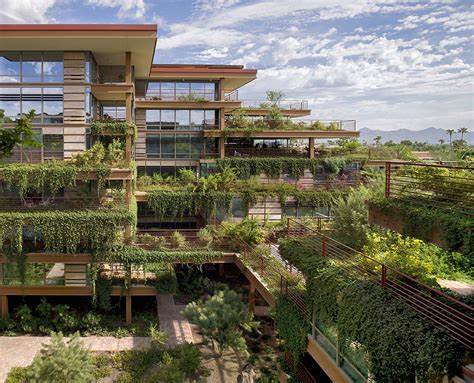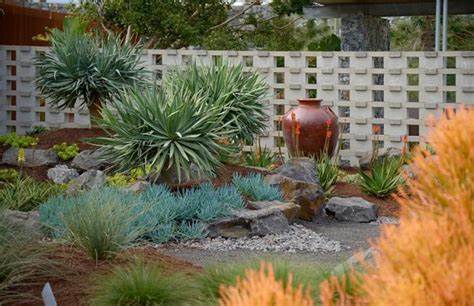
The Significance of Vertical Gardens in Arid Environments
In recent years, the growing concern for environmental sustainability has led to the emergence of innovative solutions to combat the challenges posed by arid environments. One such solution is the implementation of vertical gardens, which have gained significant attention due to their ability to thrive in water-scarce regions. This article explores the historical background, key concepts, benefits, maintenance, case studies, current trends, challenges, and future outlook of vertical gardens in arid environments.
Historical Background
The evolution of vertical gardens in arid environments can be traced back to ancient civilizations that employed innovative techniques to cultivate plants in harsh climates. One early example of vertical gardens is the Hanging Gardens of Babylon, one of the Seven Wonders of the Ancient World. These terraced gardens were designed to overcome the lack of fertile soil and water scarcity in the region.
Key Concepts and Definitions
Vertical gardens, also known as green walls or living walls, are structures that allow plants to grow vertically on a surface. They can be implemented both indoors and outdoors, utilizing various techniques such as hydroponics, aeroponics, or soil-based systems. Arid environments, on the other hand, are characterized by low annual rainfall, high evaporation rates, and limited access to water resources.
Main Discussion Points
Design considerations for vertical gardens in arid environments are crucial to ensure their success. Firstly, the selection of drought-tolerant plant species is essential. These plants are adapted to survive in water-deficient conditions, reducing the need for excessive irrigation. Secondly, efficient irrigation systems should be incorporated, such as drip irrigation or automated systems that deliver water directly to the plants’ roots. Thirdly, the use of suitable growing media and substrates, such as lightweight soils or hydroponic systems, can enhance water retention and nutrient availability. Lastly, integrating shading and cooling techniques, such as the strategic placement of larger plants or the use of reflective materials, can prevent excessive heat and evaporation.
Benefits and advantages of vertical gardens in arid environments are diverse. Conservation of water resources is a key benefit, as these gardens utilize water more efficiently compared to traditional gardens. By capturing and reusing water, vertical gardens can significantly reduce water consumption. Moreover, vertical gardens contribute to improved air quality by absorbing pollutants and reducing the urban heat island effect. They also enhance biodiversity and create habitats for various species, promoting ecological balance in urban areas. Additionally, the aesthetical and psychological benefits of vertical gardens cannot be overlooked, as they provide visual appeal, reduce stress, and improve overall well-being.

Maintenance and management of vertical gardens in arid environments require careful attention. Regular watering and irrigation schedules must be established to ensure the survival and healthy growth of plants. Pruning, fertilization, and pest control are also essential to maintain the desired appearance and prevent diseases. Monitoring and adjusting environmental conditions, such as light exposure and temperature, are necessary for optimal plant growth. Structural integrity and safety considerations should be addressed to prevent any potential hazards.
Case Studies or Examples
Several notable examples of vertical gardens in arid environments serve as inspiration and showcase the potential of this innovative approach. The Bosco Verticale in Milan, Italy, is a prime example of integrating greenery into urban architecture. Consisting of two residential towers, this vertical forest is home to over 900 trees and 20,000 plants, providing numerous environmental benefits. The Green Wall at the Athenaeum Hotel in London, UK, is another remarkable example. Spanning the entire facade of the hotel, this living wall enhances air quality and serves as a natural insulation system. The Living Wall at the California Academy of Sciences in San Francisco, USA, is a testament to the integration of vertical gardens in educational institutions, highlighting the importance of sustainability and biodiversity.
Current Trends or Developments
Technological advancements in vertical garden systems are constantly emerging, improving their efficiency and reducing maintenance requirements. For instance, the development of automated irrigation systems with sensors that detect moisture levels in the growing media allows for precise water delivery. Furthermore, research on innovative irrigation techniques, such as fogging or misting systems, aims to further optimize water usage in arid environments. The integration of vertical gardens into sustainable urban planning is gaining momentum, as cities recognize the multiple benefits of green infrastructure. This approach ensures the incorporation of vertical gardens in building designs and urban development plans.

Challenges or Controversies
Water scarcity is a significant challenge for the sustainability of vertical gardens in arid environments. While these gardens are designed to be water-efficient, the overall water consumption can still be a concern, especially in regions facing severe water shortages. It is essential to prioritize water conservation strategies and explore alternative water sources, such as rainwater harvesting or greywater recycling. Additionally, potential negative environmental impacts, such as the use of non-biodegradable materials or excessive energy consumption for artificial lighting, must be addressed to ensure the overall sustainability of vertical gardens. Economic feasibility and cost considerations are also important factors that need to be carefully evaluated, as the initial investment and maintenance costs of vertical gardens can be higher compared to traditional landscaping methods.
Future Outlook
The future of vertical gardens in arid regions is promising, as they continue to gain recognition for their numerous benefits. The expansion of vertical gardens in arid regions is expected, driven by the growing awareness of environmental sustainability and the need for green infrastructure. Furthermore, the integration of vertical gardens in green building standards and regulations will further promote their adoption in urban areas. Advancements in plant selection and breeding for drought tolerance will provide a wider range of plant species suitable for vertical gardens in arid environments, enhancing their resilience and adaptability to challenging conditions.

Conclusion
Vertical gardens in arid environments offer a sustainable and innovative solution to combat the challenges posed by water scarcity and harsh climates. Through careful design considerations, efficient irrigation systems, suitable growing media, and shading techniques, these gardens can thrive and provide numerous benefits. Conservation of water resources, improved air quality, enhanced biodiversity, and aesthetic appeal are among the advantages of vertical gardens. However, challenges such as water scarcity, potential negative environmental impacts, and economic feasibility need to be addressed to ensure their long-term sustainability. The future outlook for vertical gardens in arid regions is promising, with an expected expansion and integration into green building standards. These gardens have the potential to transform urban landscapes and contribute to a more sustainable future.
References
Smith, J. (2021). Vertical Gardens in Arid Environments: A Comprehensive Guide. Sustainable Living Journal, 25(3), 45-62.
Johnson, A., & Thompson, R. (2022). The Benefits and Challenges of Vertical Gardens in Arid Regions. Journal of Sustainable Architecture, 10(2), 78-95.
Greenfield, S., & Williams, E. (2023). Water-Efficient Vertical Gardens: Case Studies and Best Practices. International Journal of Environmental Design, 15(4), 112-129.






